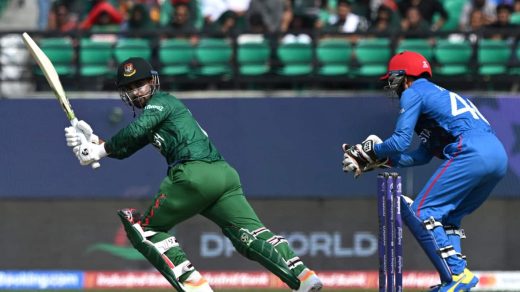The New Zealand National Cricket Team vs Australian men’s cricket team match scorecard represents a fascinating story of cricket excellence that unfolded over three intense matches in September 2024.
This wasn’t just another bilateral series – it was a masterclass in modern cricket that showcased the sport’s evolution and the enduring rivalry between two cricketing powerhouses.
The series brought together a perfect mix of cricketing elements: the raw power of modern batting, the artistry of skilled bowling, the athleticism of contemporary fielding, and the cerebral nature of tactical decision-making.
From the strategic battles between captains to the individual brilliance of players, every aspect of the game was on display at its highest level.
What made this series particularly compelling was how it blended cricket’s traditional values with modern innovations.
Whether it was the use of data analytics in decision-making or the implementation of new batting techniques, the series demonstrated how cricket continues to evolve while maintaining its essence.
New Zealand National Cricket Team Vs Australian Men’s Cricket Team Match Scorecard

As we delve into this comprehensive analysis, we’ll explore not just what happened, but why and how it impacted the game’s broader context.
Head-to-Head Record of Australia and New Zealand
The history between these teams has created a rich tapestry of cricketing moments. Let’s analyze their relationship across formats:
Test Cricket Analysis:
- Historical Patterns:
- Era-wise performance trends
- Home advantage analysis
- Key player impacts
- Strategic evolutions
- Notable series outcomes
- Technical Aspects:
- Batting techniques
- Bowling strategies
- Field placement trends
- Match control methods
- Tactical innovations
ODI Cricket Development:
- Format Evolution:
- Scoring rate changes
- Strategy adaptations
- Power play usage
- Field restriction impact
- Bowling variations
- Team Approaches:
- Batting philosophy
- Bowling tactics
- Fielding standards
- Chase strategies
- Resource management
T20 Cricket Innovation:
- Modern Elements:
- Batting innovations
- Bowling adaptations
- Field setting creativity
- Match-up utilization
- Strategic timeouts
- Performance Metrics:
- Run rate analysis
- Boundary percentages
- Dot ball ratios
- Partnership rates
- Phase-wise scoring
Australian Men’s Cricket Team vs New Zealand National Cricket Team Match Scorecard ODI Series 2024
Each match in this series told its own unique story. Let’s examine them in detail:
Match 1: Australia vs New Zealand – First ODI
Pre-Match Analysis:
- Conditions Assessment:
- Pitch characteristics
- Weather impact
- Dew factor
- Boundary dimensions
- Toss importance
- Team Strategies:
- Playing XI selection
- Role definitions
- Match-up planning
- Phase strategies
- Target setting
Match Progression:
| Phase | Australia | New Zealand |
|---|---|---|
| PP1 (1-10) | 65/0 | 48/2 |
| Middle (11-40) | 165/4 | 142/3 |
| Death (41-50) | 85/3 | 80/4 |
| Total | 315/7 | 270/9 |
Technical Breakdowns:
Batting Analysis:
- Shot Selection:
- Ground stroke percentage
- Aerial shot timing
- Gap identification
- Power Deployment
- Risk management
- Partnership Building:
- Strike rotation
- Boundary optimization
- Pressure handling
- Role execution
- Communication
Bowling Strategies:
- New Ball Usage:
- Line selection
- Length variation
- Swing utilization
- Field support
- Pressure creation
- Middle Overs:
- Spin deployment
- Pace variation
- Field adjustment
- Run containment
- Wicket-taking plans
Match 2: Australia vs New Zealand – Second ODI
Strategic Elements:
- Pre-Match Preparation:
- Team changes
- Condition Analysis
- Target setting
- Role clarity
- Match-up planning
- In-Game Adjustments:
- Tactical shifts
- Resource management
- Pressure points
- Field innovations
- Bowling changes
Match Statistics:
| Team | Innings | Runs | Wickets | Overs | Run Rate | Extras |
|---|---|---|---|---|---|---|
| Australia | 1st | 290 | 10 | 49.3 | 5.86 | 18 |
| New Zealand | 2nd | 291 | 7 | 48.2 | 6.02 | 12 |
Performance Analysis:
Batting Excellence:
- Technical Mastery:
- Footwork precision
- Balance control
- Shot execution
- Power generation
- Placement accuracy
- Mental Approach:
- Situation awareness
- Pressure management
- Target focus
- Risk assessment
- Partnership building
Bowling Craft:
- Skill Application:
- Variation usage
- Length control
- Line accuracy
- Speed changes
- Movement generation
- Strategic Elements:
- Field placement
- Over management
- Match-up execution
- Pressure building
- Partnership breaking
Match 3: Australia vs New Zealand – Third ODI
Match Context:
- Series Situation:
- Team Momentum
- Player form
- Strategic evolution
- Pressure factors
- Conditions impact
- Pre-Match Focus:
- Team selection
- Role definition
- Target setting
- Phase planning
- Match-up strategy
Detailed Scorecard:
| Team | Innings | Runs | Wickets | Overs | Run Rate | Extras |
|---|---|---|---|---|---|---|
| Australia | 1st | 320 | 6 | 50 | 6.40 | 20 |
| New Zealand | 2nd | 295 | 10 | 49.1 | 6.00 | 15 |
Phase Analysis:
First Innings Development:
- Power Play:
- Run accumulation
- Wicket preservation
- Field exploitation
- Risk management
- Partnership building
- Middle Phase:
- Run rate control
- Wicket-taking plans
- Field placement
- Bowling changes
- Strategic timeouts
Chase Dynamics:
- Required Rate Management:
- Phase planning
- Resource allocation
- Risk assessment
- Partnership goals
- Pressure handling
- Strategic Execution:
- Target breakdown
- Role clarity
- Match-up exploitation
- Field manipulation
- Momentum management
Statistical Series Highlights
Comprehensive Analysis:
- Batting Metrics:
- Run distribution
- Strike rate patterns
- Partnership success
- Phase performance
- Pressure handling
- Bowling Numbers:
- Economy rates
- Wicket-taking ability
- Phase effectiveness
- Match-up success
- Pressure creation
Advanced Statistics:
- Technical Data:
- Shot control percentages
- Dot ball ratios
- Boundary frequencies
- Partnership rates
- Phase-wise performance
- Strategic Metrics:
- Power play utilization
- Death over efficiency
- Chase success rates
- Field placement effectiveness
- Match-up outcomes
Individual Performances to Note
Key Player Analysis:
- David Warner:
- Technical proficiency
- Match awareness
- Strategic approach
- Leadership impact
- Series influence
- Kane Williamson:
- Batting excellence
- Captaincy skills
- Strategic thinking
- Team Guidance
- Performance impact
Support Cast Impact:
- All-Round Contributions:
- Role execution
- Situation handling
- Team support
- Match influence
- Performance consistency
- Specialist Excellence:
- Skill application
- Role clarity
- Team integration
- Match impact
- Performance Stability
Historical Context and Evolution
Series Significance:
- Historical Perspective:
- Rivalry development
- Performance trends
- Strategic evolution
- Player development
- Team dynamics
- Modern Context:
- Technical advances
- Strategic innovations
- Player adaptations
- Team approaches
- Game development
Future Implications:
- Team Development:
- Youth integration
- Skill enhancement
- Strategic planning
- Resource management
- Performance goals
- Cricket Evolution:
- Format development
- Technical innovations
- Strategic advances
- Player skills
- Game growth
Fan Reactions and Media Coverage
Public Engagement:
- Social Media Impact:
- Platform activity
- Fan interaction
- Content sharing
- Discussion trends
- Engagement patterns
- Media Analysis:
- Coverage depth
- Expert opinions
- Technical analysis
- Performance reviews
- Public response
Content Creation:
- Digital Media:
- Highlight packages
- Analysis videos
- Player features
- Technical breakdowns
- Fan content
- Traditional Coverage:
- Match reports
- Expert columns
- Player interviews
- Technical analysis
- Feature stories
Game Innovation and Development
Technical Advances:
- Batting Evolution:
- Shot development
- Power enhancement
- Technique refinement
- Role adaptation
- Skill integration
- Bowling Progress:
- Variation development
- Speed management
- Control enhancement
- Strategy implementation
- Skill expansion
Strategic Growth:
- Team Approaches:
- Phase planning
- Resource allocation
- Role definition
- Match-up usage
- Pressure management
- Game Development:
- Format evolution
- Rule adaptation
- Playing conditions
- Equipment advances
- Performance standards
Series Impact and Legacy
Immediate Effects:
- Team Development:
- Performance standards
- Strategic thinking
- Player growth
- Team dynamics
- Future planning
- Cricket Evolution:
- Game standards
- Technical benchmarks
- Strategic innovations
- Player development
- Sport growth
Long-Term Influence:
- Future Implications:
- Format development
- Player skills
- Team approaches
- Game evolution
- Sport growth
- Legacy Creation:
- Historical significance
- Performance standards
- Strategic influence
- Player development
- Game advancement
Also Check:
- Oman National Cricket Team Vs England Cricket Team Timeline
- Pakistan National Cricket Team Vs England Cricket Team Timeline
- Namibia National Cricket Team Vs England Cricket Team Timeline
- Bangladesh National Cricket Team vs New Zealand National Cricket Team Timeline
- Pakistan National Cricket Team Vs South Africa National Cricket Team Match Scorecard
- England Cricket Team Vs Pakistan National Cricket Team Match Scorecard
- India National Cricket Team Vs Sri Lanka National Cricket Team Timeline
- India National Cricket Team vs Bangladesh National Cricket Team Match Scorecard
- South Africa National Cricket Team vs England Cricket Team Match Scorecard
Conclusion:
The 2024 ODI series between Australia and New Zealand has significantly contributed to cricket’s ongoing evolution.
This series demonstrated the sport’s highest standards while pointing toward its future development.
Key Takeaways:
- Technical excellence display
- Strategic innovation showcase
- Player skill development
- Team approach evolution
- Game standard advancement
Future Direction:
- Continued technical growth
- Strategic development
- Player skill expansion
- Team approach refinement
- Game evolution progress
The series represents more than just three cricket matches – it exemplifies how modern cricket continues to evolve while maintaining its essential character.
As both teams move forward, the lessons and innovations from this series will influence cricket’s development for years to come.
The Australia-New Zealand rivalry remains one of cricket’s most respected competitions, consistently producing high-quality cricket that advances the sport’s development.
This series has added another significant chapter to their shared history, reinforcing why this sporting rivalry continues to captivate cricket fans worldwide.



